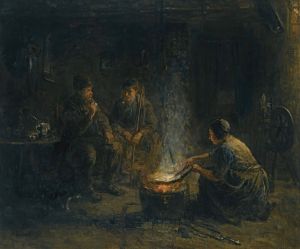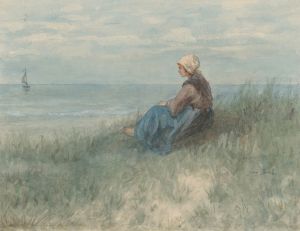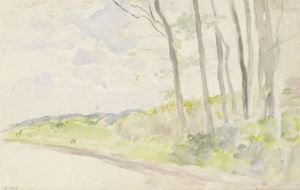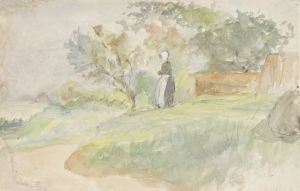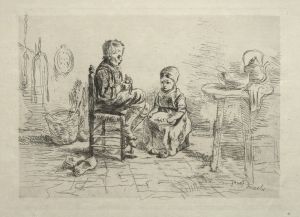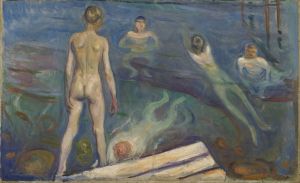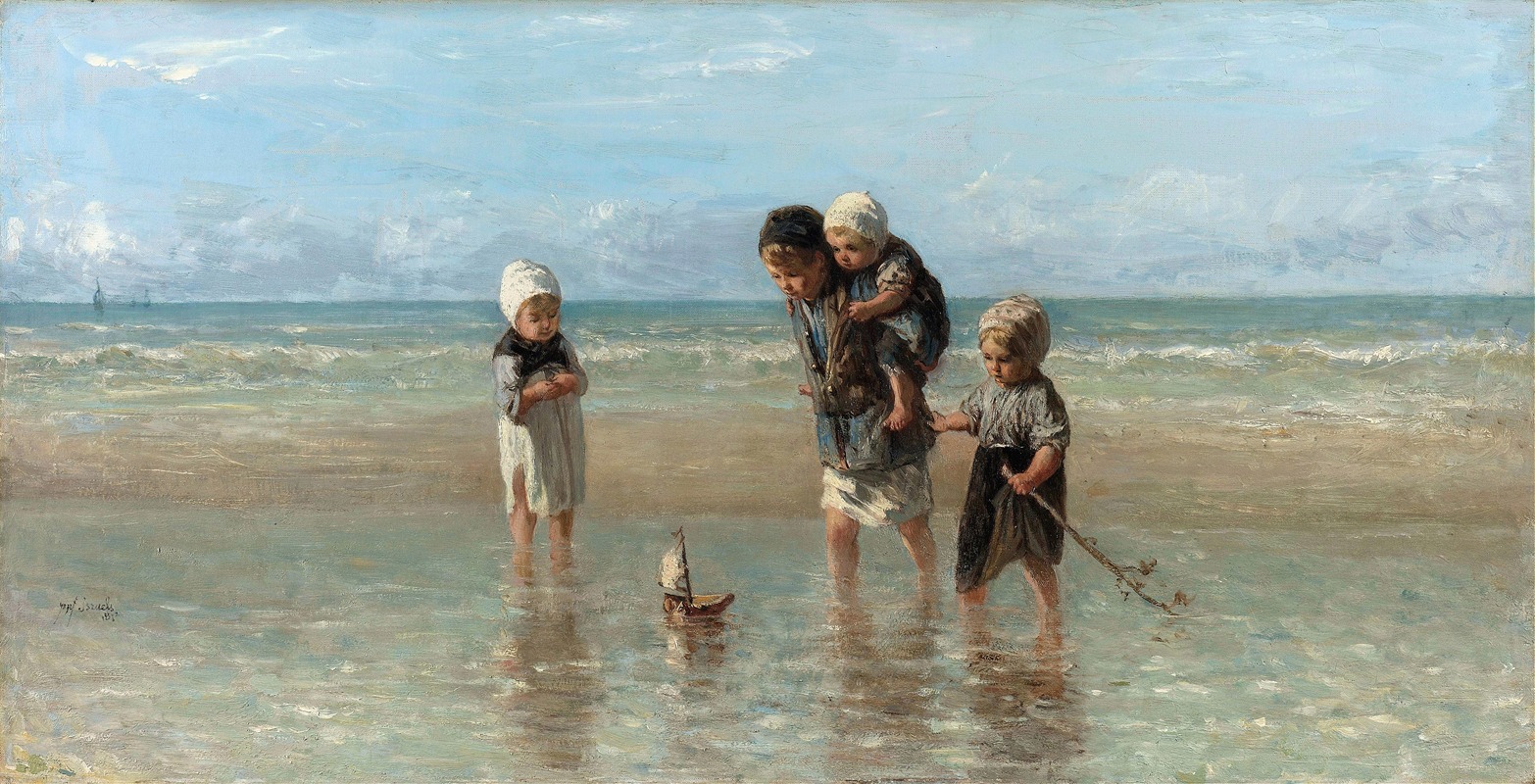
Children of the Sea
A hand-painted replica of Jozef Israëls’s masterpiece Children of the Sea, meticulously crafted by professional artists to capture the true essence of the original. Each piece is created with museum-quality canvas and rare mineral pigments, carefully painted by experienced artists with delicate brushstrokes and rich, layered colors to perfectly recreate the texture of the original artwork. Unlike machine-printed reproductions, this hand-painted version brings the painting to life, infused with the artist’s emotions and skill in every stroke. Whether for personal collection or home decoration, it instantly elevates the artistic atmosphere of any space.
"Children of the Sea" is a painting by the Dutch artist Jozef Israëls, a prominent figure in the Hague School, which was a group of artists in the Netherlands who were active during the late 19th century. The Hague School is known for its realistic portrayal of the Dutch landscape and the lives of ordinary people, often with a somber or melancholic tone. Israëls, born in 1824 in Groningen, was one of the leading figures of this movement and is often compared to the French Realist painter Jean-François Millet.
"Children of the Sea" exemplifies Israëls' focus on the everyday lives of the working class, particularly those living in coastal regions. The painting depicts children playing by the sea, capturing a moment of innocence and simplicity amidst the harsh realities of life by the ocean. Israëls was known for his empathetic portrayal of his subjects, often highlighting the dignity and resilience of the poor and working-class individuals.
The painting is characterized by its muted color palette and loose brushwork, which are typical of Israëls' style. He often used earthy tones and soft lighting to create a sense of atmosphere and mood. In "Children of the Sea," the use of light and shadow is particularly effective in conveying the textures of the sand and the movement of the water, as well as the expressions and postures of the children.
Israëls' work was influenced by his own experiences and observations of life in fishing villages along the Dutch coast. He spent time in places like Zandvoort and Katwijk, where he was able to observe the daily lives of fishermen and their families. This direct engagement with his subjects allowed him to create paintings that were both realistic and deeply humanistic.
"Children of the Sea" reflects Israëls' broader artistic concerns with the human condition and the relationship between people and their environment. His work often explores themes of struggle, survival, and the passage of time, all of which are subtly present in this painting. The sea, a recurring motif in his work, serves as both a source of livelihood and a symbol of the unpredictable forces of nature.
Jozef Israëls' contributions to art were widely recognized during his lifetime. He received numerous accolades and his work was exhibited internationally. Today, "Children of the Sea" is considered an important example of his oeuvre and of the Hague School's approach to realism. The painting is held in high regard for its technical skill and emotional depth, and it continues to be appreciated by audiences for its poignant depiction of childhood and the natural world.
Israëls' legacy endures, and his paintings remain influential in the study of 19th-century Dutch art. His ability to capture the essence of his subjects with empathy and insight has earned him a lasting place in the history of art.









